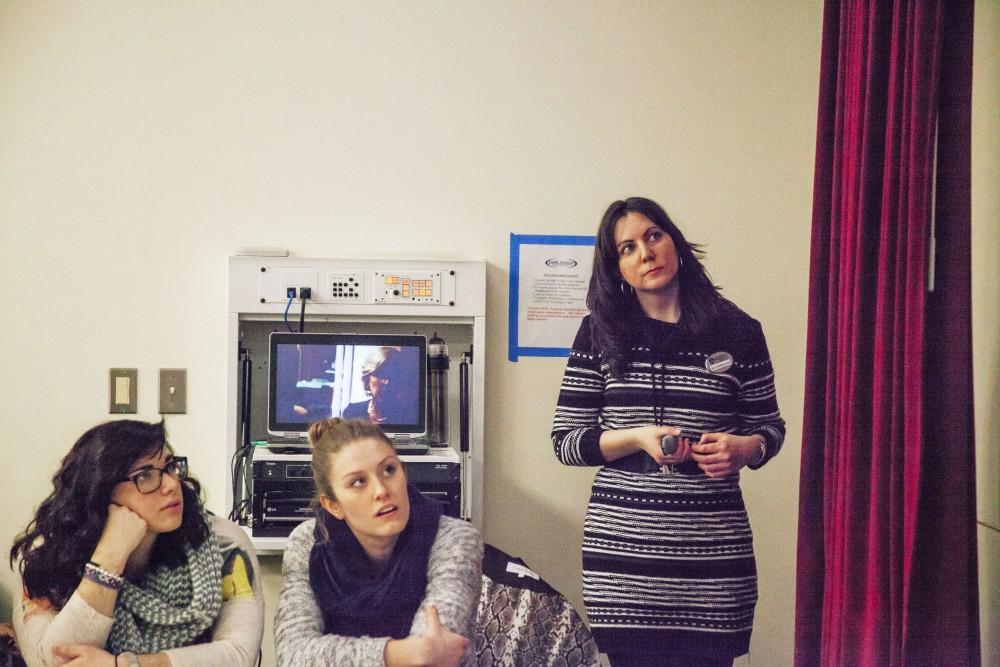Media influence on body image

GVL/Jose Rodriguez Joy Hottenstein shows students a video at the Body Image program.
Feb 23, 2015
The media deeply influences how people see and think about their bodies, a doctoral psychology intern said on Thursday.
Joy Hottenstein, who works at the University Counseling Center, spoke to Grand Valley State University students at the Kirkhof Center. Hottenstein wanted students to understand body image.
“It’s actually not about how you look, it is how you see yourself,” Hottenstein said. “It’s also how others may see you.”
Body image also deals with how one feels about his or her body. Many can relate with the struggle of being dissatisfied with the way they look. However, understanding what causes this dissatisfaction may be unknown to some.
To find the source of body image insecurities, Hottenstein said it was important to know the history. She explored how women were portrayed in the 1900s, when the corset was used to obtain an hourglass look.
Further, she compared the 1950s with the 1960s. In the ‘50s, Marilyn Monroe featured the preferred body type, although Hottenstein said she would be considered too big for modern standards.
This contrasts with the ‘60s, where the very thin model Lesley “Twiggy” Lawson was the ideal.
Both of these models merge with today’s standards, where the media portrays women as objects with voluptuous curves and perfect skin. This portrayal causes many problems for women, Hottenstein said.
“I think it is very important to understand the messages from culture and media that we receive about the ideal body image, an ideal that is unattainable,” Hottenstein said.
She said the average North American woman is shorter and heavier than the average model. She said 75 percent of average weight women think they are too fat.
In addition, she explained that most models are thinner than 98 percent of American women. The standard model is also white and blonde, with women of color rarely finding themselves in the spotlight.
However, a negative body image is not just a problem for women.
“Anyone who is living in a body, regardless of gender identity, may struggle with being dissatisfied with their body,” Hottenstein said.
The portrayal of men also causes body image problems, but it is a lot harder to pin down than it is with women. While the media has a clear portrayal of women, there are varying ideals for men.
The common portrayal of men features many muscles and stern looks. However, Hottenstein said oils and digital editing often exaggerate their features.
Digital editing through Photoshop and other tools causes a new level of problems for body image. In addition to already displaying bodies that do not match the general population, the appearance of men and women is altered to attain the perfect look.
For Hottenstein, the most important mission is to help people understand that the ideal is unattainable.
“In doing so, we can then learn to think more critically about the messages we received about beauty and physical appearance and adapt a healthier view of ourself,” Hottenstein said.
The University Counseling Center has a variety of individual and group settings that can help students with body image concerns. The staff can also help students deal with eating disorders, anxiety, depression and other issues. Meetings are free for students.
Learn more at www.gvsu.edu/counsel.






















